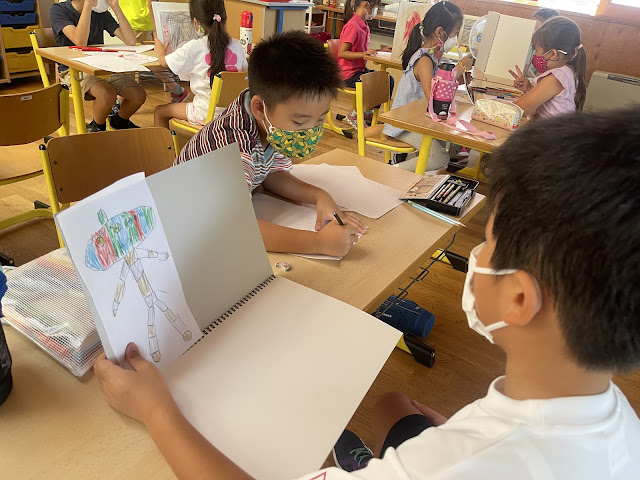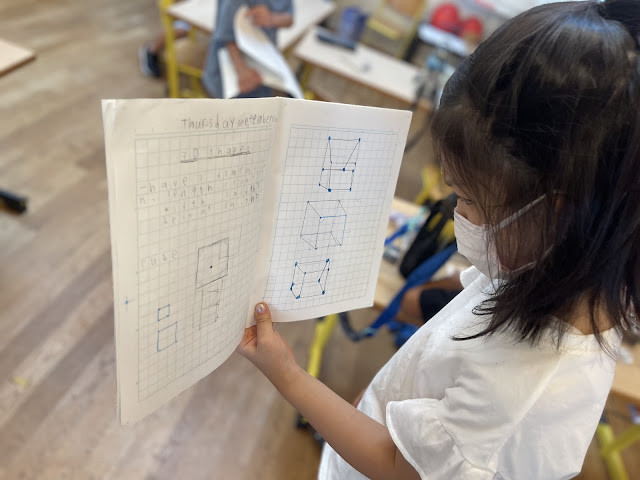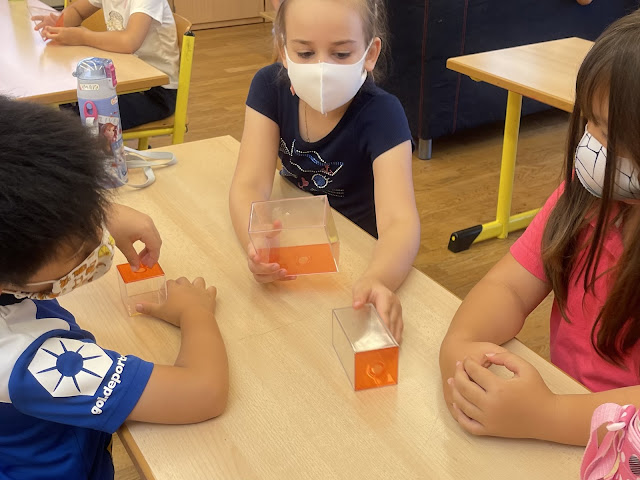Registration for club activities is now open! Click here to sign up!
This week we started putting our senses to the test as we did a number of games and activities that focused on our first line of inquiry, “How we use our 5 senses?”
During the unit time, the students were divided into 3 groups and had the chance to play 3 different games which focused on their senses of touch and sight. Some of the game activities were trying to match textured tiles with only their sense of touch, or to choose the object that had the same texture or shape as another. When it came to their sense of sight, sometimes they had to put a small puzzle together while blindfolded, or to put tangram tiles together to match a picture faster than the time it took their teammates to roll the same picture on the dice 3 times. Whichever game they played, they seemed to have a good time!




During PE, we continued to work on cooperative games. We actually played the same three games that we played last week - Over, Under Caterpillar, Loggers and Cross the River (except we changed the name to - The Floor is Lava!) and made them a bit more challenging by taking away some of the students’ senses! We used blindfolds to take away their eyesight, sound proof headphones to make it difficult to hear, and some big cooking mitts and gloves to limit their sense of touch to make it difficult to hold things. The goal of the games was not to win by being the first, but to be the team that could cooperate and communicate best and complete the tasks safely.











In discovering our 5 senses we also looked at the different words, or adjectives that we use to describe how something looks, feels, smells, sounds and tastes. We played a game called Baamboozle, that gives teams rewards for correctly answering question, but could also randomly penalize a team if they picked an unlucky number. All of the questions had to do with completing sentences about the 5 senses and it was fun. Because the game could randomly make one team swap points with another team, or jump into first place, I had the students agree that no one needs to feel bad or upset if they lost the game and they did really well with no one getting upset. They liked is so much that they asked to play again! (Maybe another day!)



In math, we moved on from the properties of 2D shapes to 3D shapes. The students were given various 3D shapes and asked to sort themselves into groups, based on something they could observe that was similar about their shapes. The groups then explained how they sorted themselves.
One group was cylinders, because they had circles on top and borrow and a side that was curved, not flat.
The second group had all sides that were squares or rectangles so they figured that they belonged together.
A third group had shapes that had sides that all met at a point “like a pyramid”, said Kana.
And the last group decided that they didn’t fit into the other categories so they made their own group.
This left just one student without a group. Her shape looked a bit like a pyramid, but although it had a couple triangular sides, they didn’t all join together like on a pyramid…so we had to look a bit closer at the other groups and noticed that there were shapes that had rectangular sides that connected to shapes like pentagons and hexagons, not just at one end but on two opposite sides. So our mystery shape finally found its group - the prisms.
During language, in preparation for some of the research that we’ll be doing about our sensory organs we investigated the differences between fiction and non-fiction texts by comparing and contrasting some of the non-fiction books, and story books in our classroom library in order to identify the features of non-fiction texts.







































































